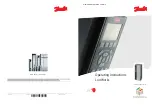
Lantronix
SI-IES-1x1D-LRT User Guide
33585 Rev. L
Page
18
of
25
4 Troubleshooting
□
Select the proper UTP cable to construct your network. Use unshielded twisted-pair (UTP) or
shielded twisted-pair (STP) cable for RJ
45 connections: 100Ω Category 3, 4 or 5
cable for
10Mbps connections,
100Ω Category 5 cable for 100Mbps
, or
100Ω Category 5
e/above
cable for 1000Mbps connections. Also be sure that the length of any twisted-pair connection
does not exceed 100 meters (328 feet).
□
Diagnosing LED Indicators:
To help identify problems, monitor the SI-IES-1x1D-LRT front
panel LED indicators that provide the device’s current status. These LEDs can help diagnose
common problems you may encounter during installation.
□
Verify that you are using the right power cord and power adapter.
□
If the SI-IES-1x1D-LRT is not producing full PoE+ output, ensure the power supply is
adjusted to provide the required input power. The converters accept 48~57VDC; higher
voltage (53~57VDC) required for some high powered PD loads. See
Wiring the Power Inputs
on page
13
.
□
If the power LED does not light when the power cord is plugged in, you may have a problem
with the power cord or power source. Check for loose power connections, power losses and
power at the power outlet. If you still cannot resolve the problem, contact Lantronix technical
support for assistance.
□
If the Injector/Converter LEDs are normal, the connected cables are correct, and the device
fails to transmit data, check your system’s Ethernet devices’ configuration or status.
□
Check the DIP switch setting. The devices ship defaulted to 1000Base-T on the DIP switch.
When changing the speed from 1000Base-T to 100Base-T, the unit must be power cycled
after installing the 100Base-T SFP and setting the DIP switch to 100 Mbps. Then it will link at
100Base-T. See
DIP Switch
on page
8
.








































